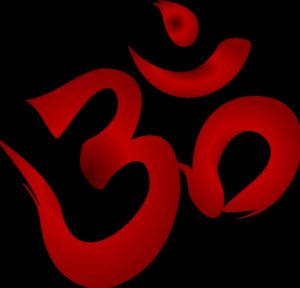As yoga and meditation have gained popularity over the years, many people have grown comfortable using the term accompanying these practices. For instance, maybe you already know that “namaste” means “the light in me bows to the light in you”. But what exactly is the meaning of Om?
What does Om mean?

Om
There are a lot of meanings and interpretations of Om. But first thing’s first: Om, or Aum, is a Vedic Sanskrit word with three sounds (or syllables): “A”, “U”, and “M”. “In Sanskrit, the vowels ‘A’ and ‘U’ become ‘O’. “Aum or Om is one of the most powerful mantras of all time. Originally from Hindu and Buddhist teachings, mantra refers to a word, sound, or phrase that is repeated and used to support a meditation practice. A mantra is given to a student by a guru (or spiritual teacher)
Another Om meaning interpretation is “everything and everyone”. “Om is said to represent the whole world and all of its sounds, thus noting our connection to the universe”.
History of Om
The sound appears to have first cropped up in the Upanishads, a collection of sacred texts that inform Hinduism. The Mandukya Upanishad, which is entirely devoted to om, begins like this: “Om is the imperishable word. Om is the universe, and this is the exposition of om. The past, the present, and the future, all that was, all that is, all that will be is om. Likewise, all else that may exist beyond the bounds of time, that too is om.” That pretty much covers it; om is big indeed.
Om is also considered the mother of the bija, or “seed” mantras — short, potent sounds that correlate to each chakra and fuel longer chants (like, say, Om Namah Shivaya). Depending on who you talk to, it relates to either the third eye or the crown chakra, connecting us to the Divine. No wonder its core to some Buddhist systems and other Indian religions.

Buddhist
Some scholars say that the shape of the visual om symbol embodies each of its syllables — the three is the Sanskrit letter for “ahh,” that same three with the mini S on it is “oooh,” and the bindhi and half-moon at the top are the “mmm.” Some say the symbol is connected to Ganesh, the Hindu half-elephant god who removes obstacles, because if you squint, you can see his rotund curves and graceful trunk represented.
Om in meditation
In a yoga setting, the chanting of om at the beginning of class ushers practitioners into the time and space that is about to be spent in meditation. Likewise, an om at the end of class signifies that your physical struggles has ended and it is time to reenter society.
